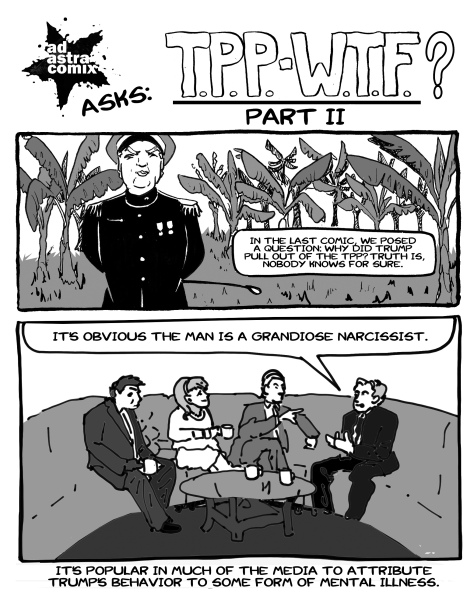
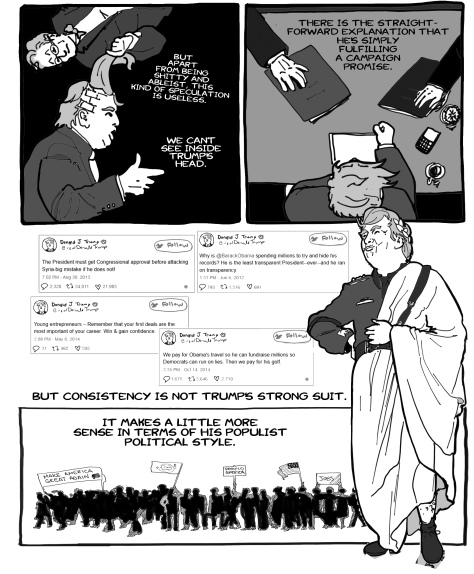









 On August 13, 2015, Peter Collins died in prison. The headline in his hometown newspaper read ‘Police Killer Peter Collins dies in prison‘. It’s remarkable how many lies can fit in a headline.
On August 13, 2015, Peter Collins died in prison. The headline in his hometown newspaper read ‘Police Killer Peter Collins dies in prison‘. It’s remarkable how many lies can fit in a headline.
No one contests that in October, 1983, Pete shot and killed Constable David Utman. But for the headline to say only that Pete was a ‘police killer’ is to tell an unforgivable lie. It might have read ‘Award-winning AIDS activist Peter Collins’ or ‘Fearless champion of animal rights Peter Collins’. A more honest headline could have said ‘survivor of child abuse Peter Collins’, in recognition of a portion of his trauma.
There is another unforgivable lie in that headline. ‘Peter Collins dies in prison’. They use the neutral word, dies, as though there’s nothing else to say about it. But here’s something that needs to be said: the prison system murdered Pete. When he found blood in his urine he asked to see a doctor. It took them months to fulfill his request. Bladder cancer can be treated if you catch it early. But for Pete it was too late.
To tell Pete’s story the headline might well have added another word at the end. That word is ‘alone’. Though his cancer was known to be incurable he was denied compassionate release. He might have spent the last weeks of his life reunited with his family. With his friends. With freedom.
But whether it’s for love of the police or the profitability of sensationalism, no headline is going to tell that story. For that you’ll have to read his book, ‘Free Inside’, published by Ad Astra Comix. Featuring comics, original art and writing by Pete and those who knew him, ‘Free Inside’ is no fit tribute to a man whose indomitable spirit cannot be captured by mere print.
But at least it tells the truth.
Preview of Art in “Free Inside”
Things you can do to help:
Pre-order copies of “Free Inside” for yourself, your classroom, your church library, or your social justice organization by e-mailing us at adastracomix@gmail.com
Share the following press release about the book:
FOR IMMEDIATE RELEASE 'Free Inside' Documents the Life of Prisoner and Activist Peter Collins Ad Astra Comix is pleased to announce the publication of its latest title, 'Free Inside: The World of Peter Collins'. A mixture of comics, art and writing by Pete Collins and those who knew him, 'Free Inside' is a record of Pete's courage and tenacity. After a troubled childhood, Pete was imprisoned in 1983, convicted of killing Ottawa Police constable Robert Utman. Left alone with his thoughts in prison, Pete felt a terrible remorse for what he had done that would remain with him for his entire life. He spent the next several decades of his life working to heal himself and help those around him. He died of bladder cancer in 2015 after being denied compassionate release so that he might spend his last moments with his family. Prison confined Pete but could not contain him. He was an advocate for the rights of animals, prisoners and people with HIV / AIDS. In 2008, he was awarded the Canadian Award for Action from the Canadian HIV/AIDS Legal Network and Human Rights Watch. He helped prepare fellow prisoners for parole hearings and fought tirelessly for justice. Although the prison authorities repeatedly obstructed his work as an artist, Pete persisted. His acerbic cartoons about prison life speak to the frustrations therein. His political cartoons skewer the hypocrisy of powerful people. His sketches of birds and other wildlife show his sensitivity and patience. 'Free Inside' is a kind of memorial to Pete - full of his work, his thoughts and the thoughts of those who loved him. It speaks to the failures of the Canadian prison system and the triumph of the human spirit in the face of misery. We are proud to publish this first full length collection of Pete's work and hope that it will encourage people to judge prisoners not in terms of their one mistake, but the whole of their lives and experiences.
The Left was baffled in 2016 to learn that Trump was taking a stance against the Trans-Pacific Partnership, or TPP. As the new administration fires up for trade wars, perhaps it’s time to review what we know about the role of the American state in international trade. 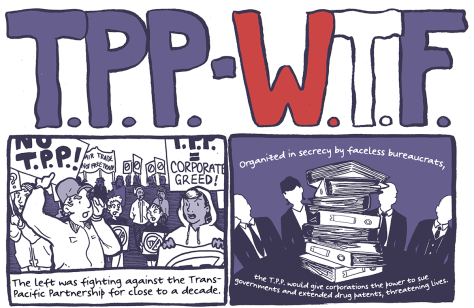



I’m on tour at the moment and am moving like molasses, but I’ve finally gathered myself up from drawing my own comic that takes place in Alberta, to talk about my *favourite* comic that takes place in Alberta. Michael Comeau’s ‘Hellberta’ has been described elsewhere on the internet as “one of the most meaningful and interesting” variations of a Wolverine comic, and I must agree. It explores the Canadian home of one of comic fandom’s most celebrated characters, against a background that is at once both more realistic and more surreal than your garden-variety Marvel title.
My conversation with Michael is below. For a better run-down on the plot and cultural significance of ‘Hellberta’, I recommend reading the Barbed Comics review linked above. To pick up a copy for yourself, you can do so here.

N: What was your relationship to comics growing up? To X-men and Wolverine in particular?
M: I collected the “Uncanny X-men” from the Mutant Massacre story arc to when Jim Lee branch off to the merely “X-men” title approximately 1986 to 1991. Wolverine emerged as an intriguing character for me and many others. The Chris Claremont, Frank Miller mini series is the quintessential statement on the character. I bought an old “Inferno” issue of Uncanny X-men in Drumheller Alberta and began drawing Wolverine. I didn’t pay attention to super hero comics for around a decade and was mildly annoyed to find out they filled out Wolverine’s back story to be that his name was no longer Logan but James Howlet and he was originally British. I can usually recognize when a writer can’t grasp the Canadian hoser Logan archetype so it poses the question what would I do with the character. The reclamation of Wolverine opened up notions of Canadian identity like collaging the archetypes of Neil Young and Logan.
I often find myself fantasizing about the ability of the supernatural (and by extension, superheroes) solving the world’s social and political problems, beyond what I would see in your standard comic book. So I’ve found that Hellberta has been really satisfying for me and other activist folks I’ve shown it to. Would you describe Hellberta as a kind of political revenge porn, like Inglorious Bestards is to nazism or Django Unchained to slavery and racism?
I am a straight/cis/white man from Ontario who learned about Albertan activist culture among the oil sands boom while living and traveling with queer and trans people from Calgary. I was unsure how to depict the queer flight from Calgary or the environmental impact of the tar sands so I took a popular myth from the area and supplanted it onto the situation. What would Wolverine do? Superheroes are extensions and exaggerations of our hopes and fears I don’t really see them as rising above anything. I’d rather see them struggle with our same mundane problems in spite them being so exceptional.
I would hate it if someone compared anything I’d done to a Tarantino film, so in your own words – what were you going for with Hellberta? What would you say were your influences or sources of inspiration?
A: Initially it was a cahier de voyage with rough drawings that were somewhat related to our adventures on the road. Then I included the Wolverine vs. the tar sands as a way to learn how to make a comic. It had direct X-men references like how Wolverine would “hunt” deer by creeping up and touching them or the Phoenix as an arbitrary global catastrophe and an Osamu Tezuka style time lapse of total destruction to gradual renewal. The photo comic section was based on the relationships Logan has with young women. He is a good archetype for intergenerational friendships with women. The “Sackville Slapper” section is more about trajectories across provinces. It is inspired by Donald Shebib’s “Going Down The Road” movie and the SCTV spoof of it. Both of my parents are from New Brunswick and i wanted to reference the east coast. The idea was Logan as Popeye and Puck as Wimpy in an east coast Tijuana Bibles style book which is a paradigm shift away from the photo comic.
There’s a lot of Christian iconography in this book that can’t go unnoticed. Harper and his harlots fly around on a cross, but it is Wolverine who is martyred and rises again. How did you decide to incorporate this imagery?
Christianity is a conquering ideology used in colonization. It severs a localized spiritual connection to the land. I often think of what therapists call the “reversal of desire” regarding someone feeling repressed and ostracized by images of Christ and finding comfort in Satan etc. Like a metalhead teenager. In processing my own catholic repression I enjoyed drawing from medieval christian imagery. Wolverine is a classic christ figure. Sacrificing himself to be resurrected through his homo-superiority ie. healing factor. He regularly gets crucified onto X’s in comics. The Right Wing wields notions of God as a weapon and I wanted to counter that with what is essentially the same human impulse to create heroes/gods but from a far more transparent place as pop culture.
One question for the printing nerds: take us through the printing process of this book, because the dual tone is enough to make your brain want to explode. It kind of feels like a throw-back to those cheap 3D graphics with the red & blue ink that you could dig out of the bottom of a cereal box. How did you decide on this technique?
I’ve created and printed many 2 colour screen printed posters. The first issue was printed on Jesjit Gill of Colour Code Printing’s very first risograph machine which only printed one colour at a time so the registration had to be very loose. I was doing the dot tone with a photocopier. Copying over top the lines or turning the breakdown into a negative, copying over a negative dot tone and reversing back to positive and then copy over top the line work. I am fascinated by the timbre of an image and use of tone. It is constantly evolving through out my work.
Do you see yourself making anything in this vein again?
There is an Alpha Flight story in my head that has haunted me for years. I have done my own riff on Son of Satan but now for the most part I am working on original stories with only some sketchbook strips that might be bootleg. Lately when I don’t know what to draw I do without reference Superman, Wonder Woman and Batman. No matter how crud the drawing is you still project the characters onto them. So naturally I have thought of dumb, petty dialogue for them to exchange.
Since this comic was created, pipeline projects (and their messes) continue to dot the North American landscape.We’re also entering a “Trump era”, which shares a fair bit of common ground with the Harper Government. Do you think Wolverine is an important hero to have in an age like this?
Heroes are as important as we make them. Each situation is gazed at through the lens of the hero prism. Be it Wolverine, Jesus, Tupac or Joni Mitchell. Logan is post-human, a homo-superior, so he points to the future but is from the far past.
We’re thrilled to announce the publication of our fourth title, Undocumented: The Architecture of Migrant Detention Centres’. First published in a very short run in 2014, Undocumented grew out of the research of architect and activist Tings Chak. Tings has been active in the Toronto chapter of No One is Illegal, a group dedicated to protecting the rights and freedoms of migrants.
This second, expanded edition of the book comes at a difficult time for migrants. With Trump talking about building a border wall, hiring hundreds of thousands of border guards and even discussing using 100,000 national guards to deport migrants, things are looking grim. The situation in Canada is not much better, as refugees flee over the US border only to be threatened and arrested when they arrived.
That’s why it’s so important to keep informed. Undocumented provides critical context for understanding how migrant detention works to strip people of their humanity and make them invisible to society at large. Forewarned is forearmed as they say and this book helps to explain what is shaping up to be one of the most important struggles of the 21st century.
What’s more, Tings is donating her royalties to the End Immigration Detention Network, so every sale will help fight the oppression of migrants.
Head on over to the crowdfunder page!
In January 2017, Ad Astra Comix is teaming up with Toronto-based artist and activist Tings Chak to produce a new and improved 2nd edition of their work, “UNDOCUMENTED: The Architecture of Migrant Detention”.
This 120 page book of illustrations, diagrams, and comics journalism-style interviews with former detainees explores the world of migrant detention from the intersection of architecture and migrant justice. The result is a unique and eye-opening argument for an end to migrant detention as we know it –or, in many cases, as we have only begun to discover it exists.
Pre-orders for the book’s 2nd edition will begin with a crowdfunder in January, and we’d like to use the crowdfunder as an opportunity to celebrate all art against migrant detention.
– End Migrant Detention
– Refugees Welcome Here
– No One Is Illegal
– Stop the Deportations
– Migration is Not a Crime
If you are an artist and would like to “donate” a digital file as a promotional perk, we will promote your art through the crowdfunder and compensate you for your work to the tune of a 20% royalty on all items sold. Please e-mail adastracomix@gmail.com for details.
Deadline for art submissions will be January 1, 2017. We request that files be 300 dpi, black and white or colour, and between the size dimensions of 5″ x 7″ – 18″ x 24″ (irregular dimensions may also be accepted). Any questions or concerns, please e-mail Ad Astra Comix at adastracomix@gmail.com.
Check out some beautiful migrant justice artwork through the JustSeeds print collective and their collection, “Migration Now!” Have any other inspiring suggestions? Msg us and we’ll share it!
Ad Astra Comix is pleased to announce the second edition of ‘Undocumented: The Architecture of Migrant Detention“. First published by an academic architecture publisher in 2014 in a limited run, we are excited to bring ‘Undocumented’ to a wider audience.

As with previous Ad Astra projects, a pre-order campaign will be held to raise awareness and cover the costs of printing. Stay tuned for details!
Last January, we spent time in Atlanta Georgia with our friend. Specifically, we spent time in Dekalb County, Georgia, with Andrew, the co-founder of On Our Own Authority Books and his daughter, Olivia. This comic is about them.


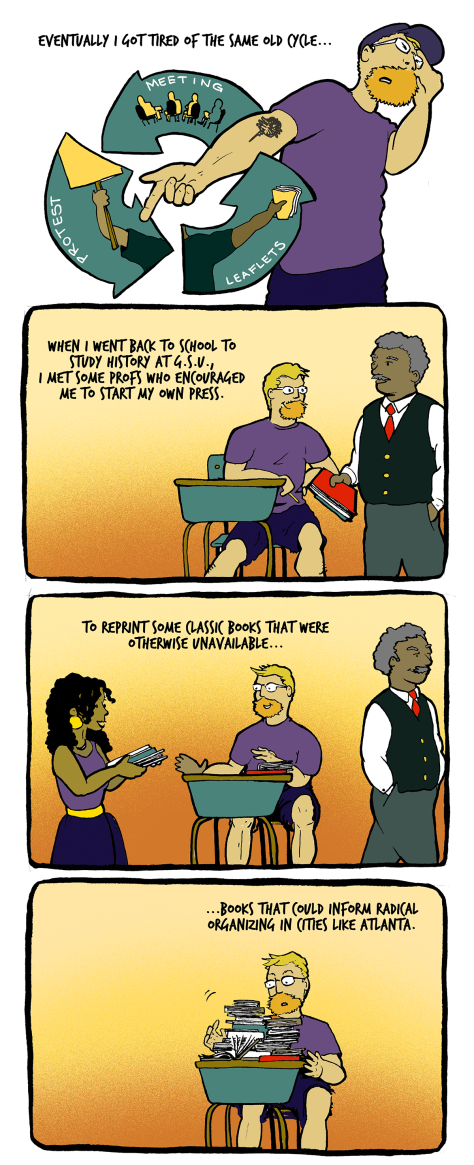


Anyone who has accidentally gotten their one theatre friend talking has heard of ‘RENT’, the 1993 musical about artists and activists living in Alphabet City, New York. But far fewer people have ever heard of Seth Tobocman’s ‘War in the Neighborhood’, a graphic novel published in 1999 that has more than a few similarities to ‘RENT’. How many? Let’s take a look.
 1. Both take place in New York City’s Lower East Side
1. Both take place in New York City’s Lower East SideSure, Alphabet City is a little bit more specific than ‘Lower East Side’, but it’s the same neighborhood, a stretch of blocks between Avenue 1 and A Street. Now one of the most expensive places to live in North America, the Lower East Side once had a reputation for being a haven to bohemians, radicals, immigrants and anyone else looking for a cheap place to live as they set out to build lives in the capital of the world. The perfect place to write a tragedy in the case of ‘RENT’, or watch one unfold, in the case of ‘War in the Neighborhood’.

No, not that Bush. From 1988-1992, George Bush Sr. was president of an America in transition. Eight years of Ronald Reagan had kick-started the “War on Drugs”, broken the back of the labor movement and set the stage for the disappearance of the middle class. Many of the themes the two works have in common: the AIDS crisis, gentrification, conscientious objection to said “War on Drugs,” and heavily politicized art. Romantic as life on the Lower East Side might seem in art, the lived reality was often one of hunger, cold and constant anxiety that today would be eviction day. Both ‘RENT’ and ‘War in the Neighborhood’ show that heady mix of insecurity and adventure.
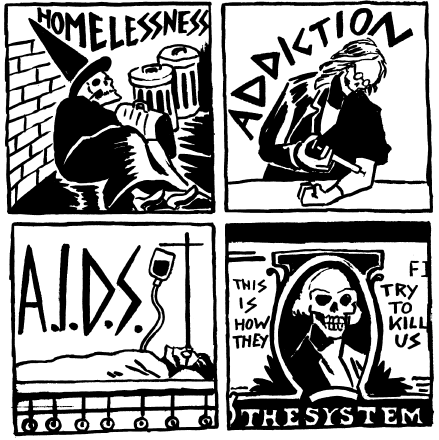
At the root of that anxiety about displacement, of course, was gentrification. After decades of neglect and urban decay, developers in New York City saw an opportunity. Slowly, condos began springing up along with yuppie shops, gyms and coffee bars, pricing residents out of their own communities.
Both the squatters and gentrifiers look at the decaying urban infrastructure and see possibility: but where squatters see the potential for an inclusive, self-reliant community, gentrifiers saw an opportunity to turn a profit regardless of the human cost.
In ‘RENT’, Benny is an affable tech entrepreneur who promises his old bohemian buddies a home in his state-of-the art “cyber studio” – but only if they can stop a protest happening in the neighborhood—against what? Gentrification. Meanwhile, this process of urban transformation is illustrated as a gigantic serpent in ‘War in the Neighborhood’, coiling itself up the old apartment blocks and suffocating the life out of the people who live there. Backed by the power of local politicians, this force seemed unstoppable.

In both stories it is a group of squatters who form a front-line opposition to this community takeover. They occupy the abandoned buildings before the landlords get a chance to burn them down. While Roger and Mark may be living for free, courtesy of Benny, Mimi and the rest of the squatters seen in ‘RENT’ are very much taking their chances. Squatting is a major theme of ‘War in the Neighbourhood’, where the struggle to build a life that you could lose at any time appears again and again.
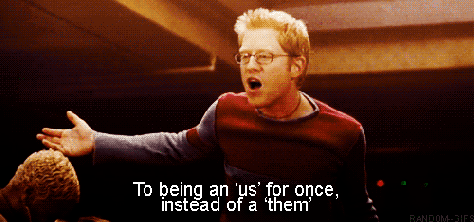
Sure enough, wherever there are struggles against gentrification, anarchists probably aren’t far behind. In ‘War in the Neighborhood’, anarchists party in Tompkins Square Park, fight the police, denounce Leninists, and insist on democratic process in the governance of the squats. As for ‘RENT’, Although almost the entire cast exudes a cheeky anti-authoritarianism, only former professor Collins is explicitly identified:
‘And Collins will recount his exploits as an anarchist – including the tale of the successful reprogramming of the M.I.T. virtual reality equipment to self-destruct, as it broadcasts the words: “Actual reality – ACT UP – Fight AIDS!”

The Bush years marked a continuation of Ronald Reagan’s so-called “War on Drugs”, an effort that led to moral panic, militarization of police forces, and the criminalization of people living with addiction. In Rent, Roger is recovering from a heroin addiction, while Mimi is actively using. The question of addiction is portrayed sentimentally and feels a little bit borrowed for the sake of deepening tragedy. In ‘War in the Neighborhood’, several characters are addicted to heroin, cocaine, or crack, and there is nothing romantic about it. Tobocman portrays drug use as a fact of life under capitalism—the baggage that we sometimes carry with us to deal with our pain. The question of whether or not to let people use drugs in the squat is a major source of conflict: how do we build a new world that is inclusive and supportive when we carry so much baggage from the world we want to leave behind?

It’s impossible to write about New York City in the Bush Sr. years without addressing the AIDS crisis. Government silence and inaction allowed the disease to become an epidemic, devastating affected communities. In RENT, fully half of the main cast has AIDS, which claims the life of Angel, a drag queen and street performer. In the middle of ‘La Vie Boheme’, the cast leans on the fourth wall by referencing ACT UP, the direct action group organized by people living with AIDS.
ACT UP also appears in ‘War in the Neighborhood, where Scarlett is a squatter living with the virus, struggling to find a safe space in the middle of a virtual war zone. They struggle to find the physical energy, let alone the spirit, to continue the fight for housing. Another character, Tito, is bedridden due to complications but is able to keep watch for nearby squatters and help them stay safe.

Anyone walking through the Lower East Side can see that gentrification has won. The bohemian utopia, always half-imaginary, exists only in works like Rent and ‘War in the Neighborhood’. It isn’t easy to tell the story of its life without touching on the death that was all around.
In ‘RENT’, the death of Mimi is the most visible impact of the AIDS epidemic, though people disappear steadily from her AIDS support group. Tension around Angel’s death fragments their circle of friends. In ‘War in the Neighborhood’, the squats slowly dissolve in a mix of death, eviction and interpersonal conflict.
But neither one ends as a tragedy. Rent ends with Mimi pulling back from the brink of death, following Roger’s confession of love. ‘War in the Neighborhood’ ends with a thoughtful meditation on how hard we are on each other, and that if we can see the possibilities in what we might be, there’s no telling what we can do.
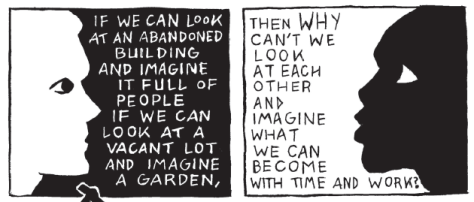
Maybe good tragedies need a moral lesson to soften the blow. I think both these stories end with a moral: ‘keep living; there is hope’. And hope, these days, is in short supply. We’ve got to take it where we can find it; to make the most of the time we have.
We’re publishing a second edition of ‘War in the Neighborhood’! To order your copy, check out our crowdfunder or, head over to our press kit to learn more about the book.




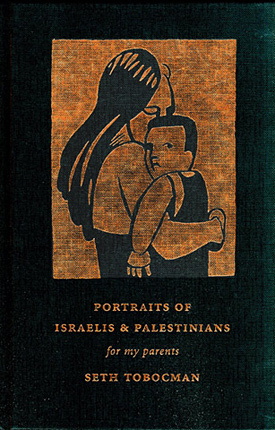
Other books that Seth has contributed to:
Since 1979, Seth has contributed art, money, and time to the radical comics anthology, World War 3 Illustrated. Here are a few…